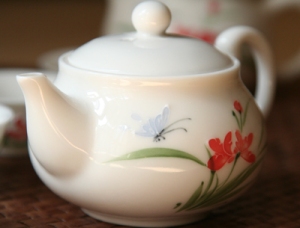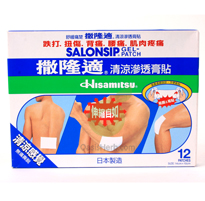Tea is one of the most widely-consumed beverages in the world. Beside quenching thirst, tea also contains lots of natural ingredients which might be beneficial to the overall health. This article reviews the clinical benefits of tea.
Tea
According to Chinese legends, tea was discovered by the Emperor Shen Nong (神農氏) in about 2737 BC, when a gust of wind blew tea leaves into his bowl of boiling water. The emperor took a sip of the cup and was pleasantly impressed by the flavor.
Whenever the Emperor fell ill after taking poisonous food or herbs, he always used tea as an antidote. He believed that tea can provide “vigor of body, contentment of mind, and determination of purpose”’. Since then tea has been a staple product and the main beverage in China.
Today, tea is the second most widely consumed beverages behind water around the world. Based on the level of fermentation, tea can be categorized into 6 types (green, white, fragrant, Oolong, black, Pu-erh). Pur-erh tea undergoes the longest period of fermentation while green tea, produced by steaming, are exposed to least fermentation or oxidation.
Beyond Quenching Thirst
Tea leaves contains many chemicals. Some of which, such as catechin, amino acids, vitamins (C, E and K) and polysaccharides, are beneficial to human health. Among all the chemicals, catechin, an antioxidant, is responsible for most of the cardio-protective and cancer preventive effects.
However, not all teas contain the same amount of catechin. During the fermentation process, some or all of the catechins are destroyed.
Black and Pu-erh teas, which undergo the longest period of fermentation has the least amount of catechins, while green (Lung Chen Tea) and white tea, which are least processed, are able to retained highest amounts. Thus, the lipid lowering and cancer protective effects are stronger for green than black tea.
Cardiovascular disease
Beside anti-oxidant property, green and white teas also possess blood pressure lowering, lipid-lowering, antithrombogenic and anti-inflammatory properties.
In animal studies, green tea has been shown to improve endothelia function, lower cholesterol levels and reduce bio-chemicals (such as thromboxane) which might lead to atherosclerosis and myocardial infarction.
In human studies, habitual consumption of green or oolong tea was associated with lower risk of developing hypertension and stroke. The reduction in hypertension is related to its vasodilatation effects while the stroke reduction might be due to its radical scavenger and lipid peroxidation action.
Diabetes
The catechin contained in green tea has also been shown to have insulin-like or insulin-enhancing activities. Investigators in Taiwanese have found recently that the catechin in green tea enhances insulin sensitivity and increase glucose transport to the fat cells in Sprague–Dawley rats.
In Japan and Taiwan, oolong tea was shown to be an effective adjunct to oral hypoglycemic agents in the treatment of patients with type 2 diabetes.
However, one should try to avoid adding milk, soy milk, or cream to the tea, since milk can reduce the insulin-like activity of tea
Obesity
It is known in China for a long time that tea can help to control obesity. According to the classical Chinese Compendium of Materia Medica (Shihyi), drinking tea for a long time can increase longevity and helps to control the weight.
Among the different teas, Oolong tea has been shown to be effective in the treatment of obesity by increasing plasma adiponectin levels (hormone that exert weight reduction effect), enhancing fat metabolism and inhibiting the absorption of fat (via reducing pancreatic lipase activity).
Cancer
Finally, although clinical evidence is still sparse, epidemiologic and laboratory data suggest that drinking green tea may reduce incidence of several types of cancer.
Conclusion
When compared with other pharmacological agents, drinking tea might be a better option since it is natural and safe. Furthermore, the product is easily accessible and affordable and there is no need of professional supervision.
Source: International Journal of cardiology, 2006
Visit us at healthreason.com for more health related articles. For tea lovers, visit http://www.oasisherb.com/ for large selection of green tea and oolong tea.






